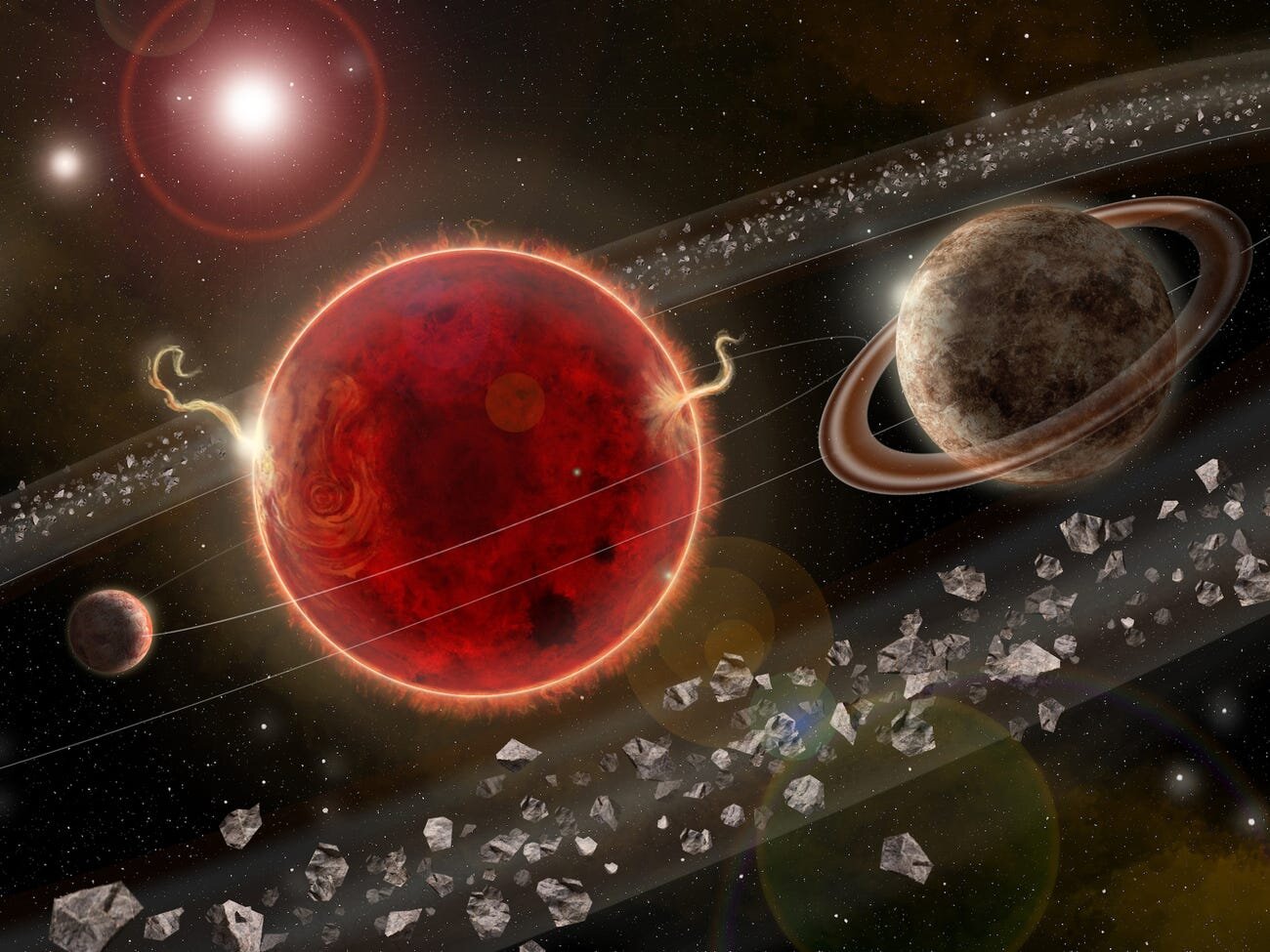
Astronomers have discovered what appears to be a second exoplanet in orbit around the nearest star to our sun, Proxima Centauri, as reported by Universe Today.
The planet candidate is called Proxima c, its mass is around half that of Neptune, and it orbits its star at a distance 1.5 times greater than the distance between the Earth and the sun. Due both to this distance and the fact the star is relatively cool, the planet would likely be very cold. If it does not have an atmosphere to keep it warm, its surface temperature could be below -200°C (-328°F).
First evidence of the existence of Proxima c came last year, when astronomers from the University of Turin, Italy, and the University of Crete, Greece, used an instrument called the High Accuracy Radial velocity Planet Searcher (HARPS) to observe the Proxima Centauri system. They observed a distinct “wobble” of the star, suggesting a planet was orbiting around the star and pulling it back and forth due to its gravity. At first, the wobble was only of borderline significance, so scientists couldn’t be sure of what they were observing.
In order to determine the presence of the planet with greater accuracy, a collation of researchers from all over the globe analyzed the light coming off Proxima Centauri, looking at its “spectra” or breakdown of light into different wavelengths. Using this technique, the researchers could learn about what the star is made of, and work out the tiny movements of the wobbles to see the gravitational pull of the planet. Using both new observations and re-analysis of older observations, the team was able to determine good evidence that a second planet was in fact orbiting around the star.
Proxima Centauri is very close to our solar system in galactic terms. However, don’t start planning a trip there just yet. As one of the authors of the study, Hugh Jones, described in an article in The Conversation, it’s still an awfully long way away. “Since Proxima is the closest star to our sun, one might think it would be easier to just travel there,” Jones wrote. “However, at 4.2 light-years, it is still immensely distant for humans. If the distance between the Earth and the sun were 1cm, Proxima is 11km away.”
The findings are published in the journal Science Advances.



